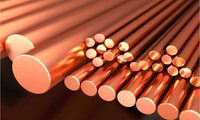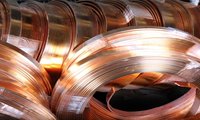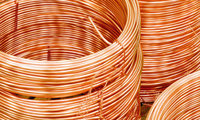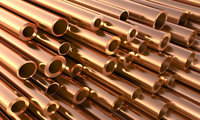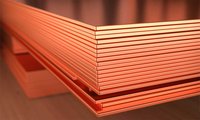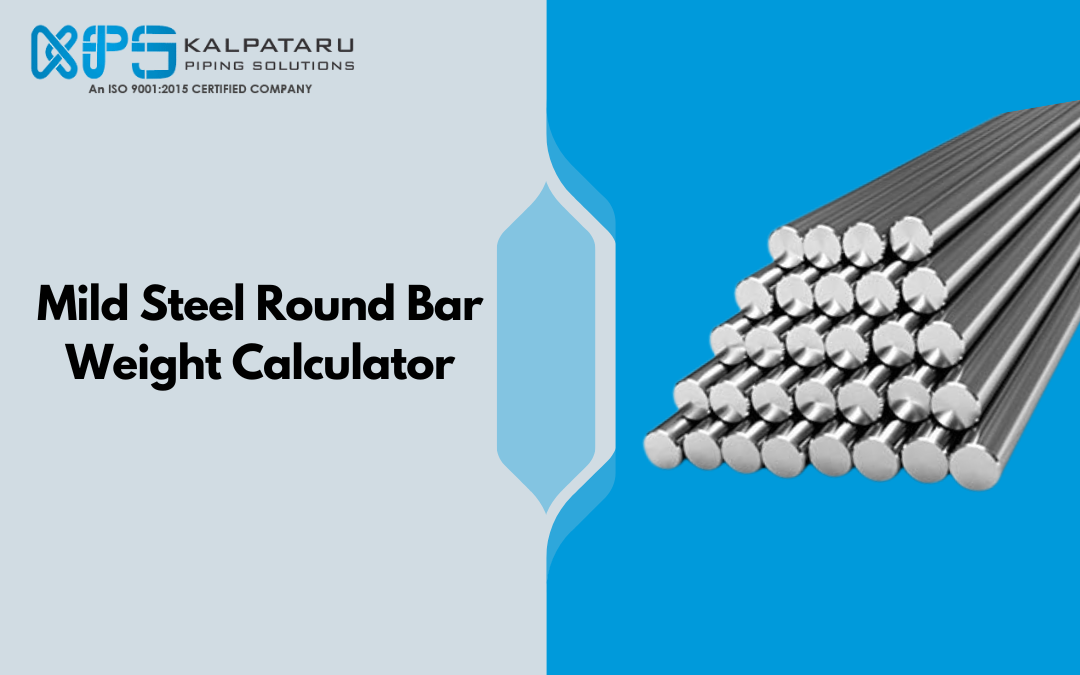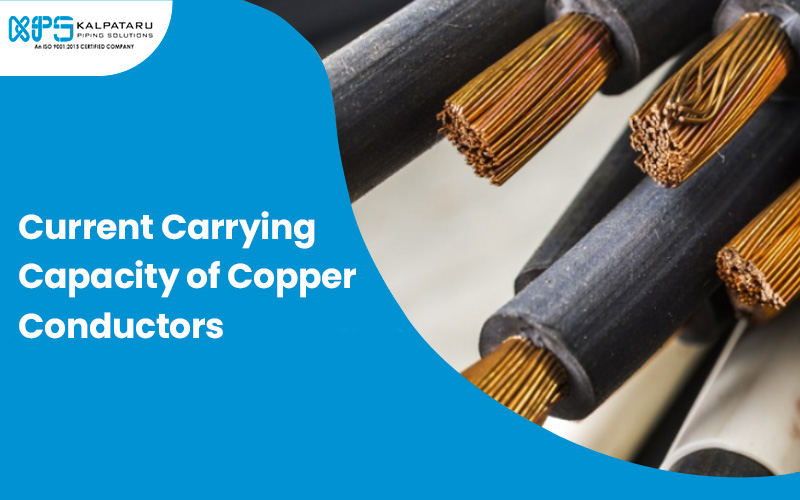Beryllium Copper Products
Leading Manufacturer Of Beryllium Copper C17200, Beryllium Copper C17200, Beryllium Alloy, Cube2pb Uns C17300 (Alloy 25) Leaded Beryllium, Beryllium Copper C17510, Beryllium Copper C17500, Beryllium Copper Price, Beryllium Copper C17200, Beryllium Copper Alloy, Beryllium Copper Strip, Beryllium Copper Alloy Exporter, Beryllium Copper Suppliers From Mumbai, India.
Cube2 – UNS C17200 (Alloy 25) Beryllium Copper Wire, Beryllium Copper Coils, Beryllium Copper C17200 Suppliers, Beryllium Copper Sheets, Beryllium Copper Alloy, Beryllium Copper Properties Copper Beryllium Price, Beryllium Copper Tube, Beryllium Copper C17200 data sheet, Uns C17200 Beryllium Copper Rods Suppliers In India.
Beryllium Copper C17200 is also known as Alloy 25 and is the most commonly utilized beryllium copper alloy and is notable for exhibiting the highest strength and hardness compared to commercial copper alloys. Its strength and hardness is similar to that of steel. C17200 copper’s ultimate tensile and Rockwell hardness properties in a peak aged condition are in the 200 ksi range and RC 45 respectively (electrical conductivity 22% IACS minimum).
Beryllium copper C17200 – Alloy 25, sometimes referred to as spring copper or beryllium bronze, is one of the greatest-strength copper-based alloys now on the market. Commercial grades of beryllium copper range in beryllium content from 0.4 to 2.0 percent. A family of high copper alloys with strength comparable to alloy steel is produced by the tiny beryllium-to-copper ratio. High strength and moderate conductivity are offered by the first of the two families, C17200 and C17300, while high conductivity and moderate strength are provided by the second family, C17500 and C17510. These alloys’ key traits include superior thermal conductivity, resistance to stress relaxation, and great reactivity to precipitation-hardening procedures.
Applications of Beryllium Copper Alloy
In extremely specialized and frequently custom-made applications including oilfield tools, aerospace landing gears, robotic welding, and mold production, beryllium copper and its diversity of alloys are used. It is perfect for down-hole wireline tools due to additional non-magnetic qualities. This copper is referred to as spring copper and by other names since it is specifically used for these applications.
Check out our Products below, Or Talk to our Sales Representative for any queries
What is beryllium copper material?
Beryllium Copper, commonly referred to as Beryllium Bronze or Spring Copper, is an alloy composed of copper and 0.5-3% beryllium, occasionally supplemented with other elements. This alloy exhibits a remarkable combination of advantageous properties, including high strength, non-magnetic characteristics, and non-sparking capabilities.
How is beryllium copper alloy made?
The production of beryllium copper alloy entails the melting of pure copper together with a small quantity of beryllium metal or beryllium oxide (BeO) powder. The resulting mixture is subjected to heat until it reaches a molten state, allowing it to solidify into an ingot. This ingot can subsequently undergo further processing, such as shaping and sizing, to meet the specific requirements of the intended application.
What is beryllium copper used in?
Beryllium copper is a non-ferrous alloy used in springs, spring wire, load cells, and other parts that must retain their shape under repeated stress and strain. It has high electrical conductivity and is used in low-current contacts for batteries and electrical connectors.
Beryllium Copper Alloy Pros and Cons
Beryllium copper is an alloy that is composed of copper and beryllium. It is known for its high strength and stiffness, as well as its excellent electrical and thermal conductivity. However, there are some drawbacks to using beryllium copper that should be considered before selecting it for a project.
PROS:
-High strength and stiffness
-Excellent electrical and thermal conductivity
-Non-magnetic
-Resists galling and wear
– Good resistance to corrosion
CONS:
– expensive
– difficult to machine
How to Select the Right Beryllium Copper Alloy for the Right Application?
There are many different alloys of copper, each with its own unique set of properties. When selecting the right alloy for an application, it is important to consider the specific requirements of the project. Factors such as strength, conductivity, and corrosion resistance must be taken into account.
Beryllium copper is one type of copper alloy that is often used in applications where high strength and excellent conductivity are required. This alloy contains between 0.5 and 3% beryllium, which gives it superior Beryllium copper mechanical properties. It is also non-magnetic and has excellent resistance to corrosion.
Another common alloy of copper is brass. Brass is an alloy of copper and zinc, and it can contain anywhere from 5 to 40% zinc. This alloy is commonly used in applications where Strength & Malleability are Required its low melting point makes it easy to work with.
There are many other alloys of copper available, each with its own unique set of properties. The best way to select the right alloy for an application is to consult with a specialist who can help identify the best material for the job.
C17200 Beryllium Copper Alloy Uses:
| ELECTRICAL: | ||
| Electrical Switch / Relay Blades | Fuse Clips | Switch Parts |
| Relay Parts | Connectors | Spring Connectors |
| Current-Carrying | Contact Bridges | Belleville Washers |
| Navigational Instruments | Clips | |
| FASTENERS: | ||
| Washers | Fasteners | Lock Washers |
| Retaining Rings | Roll Pins | Screws |
| Bolts | ||
| INDUSTRIAL: | ||
| Pumps | Springs | Electrochemical |
| Shafts | Non-Sparking Safety Tools | Flexible Metal Hose |
| Housings for Instruments | Bearings | Bushings |
| Valve Seats | Valve Stems | Diaphragms |
| Springs | Welding Equipment | Rolling Mill Parts |
| Spline Shafts | Pump Parts | Valves |
| Bourdon Tubes | Wear Plates on Heavy Equipment | Bellows |
| ORDINANCE: | ||
| Firing Pins | ||
| OTHER: | ||
| Tools | ||
Beryllium Copper Specifications:
| End Product | Specification |
| Bar | AMS 4650, 4651, 4533, ASTM B194, B196, MILITARY MIL-C-21657, SAE J463, J461 |
| Extrusions | ASTM B570 |
| Forgings | AMS 4650, ASTM B570 |
| Plate | ASTM B194 |
| Rod | AMS 4650, 4534, 4533, 4651, ASTM B196, MILITARY MIL-C-21657, SAE J463, J461 |
| Rod, Forging | AMS 4650 |
| Sheet | ASTM B194 |
| Strip | ASTM B194, SAE J463, J461 |
| Tube, Seamless | AMS 4535, ASTM B643 |
| Wire | AMS 4725, ASTM B197, SAE J463, J461 |
Beryllium Copper Alloy Chemical Composition:
| AL | BE | CO | CU | SI | |
| Min/Max | 0.2 | 1.8 – 2.0 | 0.20 min | Rem | 0.2 |
| Nominals | – | 1.9000 | – | 98.1000 | – |
C17200 Beryllium Copper Temperature:
| PRODUCT TYPE | TEMPER TYPE |
| Bar | AMS 4650, 4651, 4533, ASTM B194, B196, MILITARY MIL-C-21657, SAE J463, J461 |
| Extrusions | ASTM B570 |
| Forgings | AMS 4650, ASTM B570 |
| Plate | ASTM B194 |
| Rod | AMS 4650, 4534, 4533, 4651, ASTM B196, MILITARY MIL-C-21657, SAE J463, J461 |
| Rod, Forging | AMS 4650 |
| Sheet | ASTM B194 |
| Strip | ASTM B194, SAE J463, J461 |
| Tube, Seamless | AMS 4535, ASTM B643 |
| Wire | AMS 4725, ASTM B197, SAE J463, J461 |
Beryllium Copper Mechanical Properties:
| TEMPER | SECT. SIZE | COLD WORK | TYPE MIN | TEMP | TENSILE STRENGTH | YS 0.05% UL |
YS 0.02% OFFSET |
YS 0.005% OFFSET |
ELONG. | RH B |
RH C |
RH F |
RH 30T |
VH 500 |
BH 500 |
BH 3000 |
SHEAR STRENGTH |
FATIGUE STRENGTH |
IZOD IMPACT STRENGTH |
| – | in. | % | – | F | ksi | ksi | ksi | ksi | % | B | C | F | 30T | 500 | 500 | 3000 | ksi | ksi | ft-lb |
| mm. | – | – | C | MPa | MPa | MPa | MPa | – | – | – | – | – | – | – | – | MPa | MPa | J | |
| FLAT PRODUCTS | |||||||||||||||||||
| TM05 | 0 | 68 | 149 | – | 125 | – | – | – | – | – | – | – | – | – | – | – | |||
| TM05 | 0 | 0 | MIN | 20 | 1030 | – | 860 | – | 9 | – | 31 | – | – | – | – | – | – | – | 0 |
| TM08 | 0.19 | 68 | 182 | – | 160 | – | – | – | – | – | – | – | – | – | – | – | |||
| TM08 | 4.78 | 0 | TYP | 20 | 1255 | – | 1103 | – | 6 | – | – | – | – | – | – | – | – | – | 0 |
| TD02 | 0.19 | 68 | 92 | – | 82 | – | – | – | – | – | – | – | – | – | – | – | |||
| TD02 | 4.78 | 0 | TYP | 20 | 634 | – | 565 | – | 15 | 92 | – | – | 77 | – | – | – | – | – | 0 |
| TF00 | 0.19 | 68 | 175 | – | 155 | – | – | – | – | – | – | – | – | – | – | 36 | |||
| TF00 | 4.78 | 0 | TYP | 20 | 1207 | – | 1069 | – | 6 | – | 38 | – | – | – | – | – | – | 248 | 0 |
| TM06 | 0.19 | 68 | 168 | – | 148 | – | – | – | – | – | – | – | – | – | – | – | |||
| TM06 | 4.75 | 0 | TYP | 20 | 1158 | – | 1020 | – | 7 | – | 37 | – | – | – | – | – | – | – | 0 |
| TH04 | 0.19 | 68 | 200 | – | 180 | – | – | – | – | – | – | – | – | – | – | 45 | |||
| TH04 | 4.78 | 0 | TYP | 20 | 1379 | – | 1241 | – | 2 | – | 42 | – | – | – | – | – | – | 307 | 0 |
| TM02 | 0.19 | 68 | 128 | – | 105 | – | – | – | – | – | – | – | – | – | – | – | |||
| TM02 | 4.78 | 0 | TYP | 20 | 883 | – | 724 | – | 15 | – | 27 | – | – | – | – | – | – | – | 0 |
| TM00 | 0.19 | 68 | 105 | – | 82 | – | – | – | – | – | – | – | – | – | – | – | |||
| TM00 | 4.78 | 0 | TYP | 20 | 724 | – | 565 | – | 20 | – | 27 | – | – | – | – | – | – | – | 0 |
| TB00 | 0 | 68 | 70 | – | 32 | – | – | – | – | – | – | – | – | – | – | – | |||
| TB00 | 0 | 0 | TYP | 20 | 483 | – | 221 | – | 45 | 60 | – | – | 58 | – | – | – | – | – | 0 |
| TH02 | 0.19 | 68 | 195 | – | 175 | – | – | – | – | – | – | – | – | – | – | 44 | |||
| TH02 | 4.78 | 0 | TYP | 20 | 1344 | – | 1207 | – | 3 | – | 41 | – | – | – | – | – | – | 303 | 0 |
| TM04 | 0.19 | 68 | 142 | – | 122 | – | – | – | – | – | – | – | – | – | – | – | |||
| TM04 | 4.78 | 0 | TYP | 20 | 979 | – | 841 | – | 12 | – | 32 | – | – | – | – | – | – | – | 0 |
| TD04 | 0.19 | 68 | 110 | – | 104 | – | – | – | – | – | – | – | – | – | – | – | |||
| TD04 | 4.78 | 0 | TYP | 20 | 756 | – | 717 | – | 5 | 99 | – | 81 | – | – | – | – | – | – | 0 |
| TM01 | 0.19 | 68 | 115 | – | 89 | – | – | – | – | – | – | – | – | – | – | – | |||
| TM01 | 4.78 | 0 | TYP | 20 | 793 | – | 614 | – | 17 | – | 23 | – | – | – | – | – | – | – | 0 |
| TH01 | 0.19 | 68 | 185 | – | 165 | – | – | – | – | – | – | – | – | – | – | 40 | |||
| TH01 | 4.78 | 0 | TYP | 20 | 1276 | – | 1138 | – | 4 | – | 40 | – | – | – | – | – | – | 276 | 0 |
| TD01 | 0.19 | 68 | 80 | – | 70 | – | – | – | – | – | – | – | – | – | – | – | |||
| TD01 | 4.78 | 0 | TYP | 20 | 552 | – | 483 | – | 25 | 80 | – | – | 70 | – | – | – | – | – | 0 |
| ROD | |||||||||||||||||||
| TB00 | 0 | 68 | 72 | – | 20 | – | – | – | – | – | – | – | – | – | – | – | |||
| TB00 | 0 | 0 | TYP | 20 | 496 | – | 138 | – | 20 | 65 | – | – | – | – | – | – | – | – | 0 |
| TD04 | 3 | 68 | 103 | – | 75 | – | – | – | – | – | – | – | – | – | – | – | |||
| TD04 | 76.2 | 0 | TYP | 20 | 710 | – | 517 | – | 8 | 94 | – | – | – | – | – | – | – | – | 0 |
| TF00 | 3 | 68 | 182 | – | 130 | – | – | – | – | – | – | – | – | – | – | – | |||
| TF00 | 76.2 | 0 | TYP | 20 | 1255 | – | 896 | – | 3 | – | 39 | – | – | – | – | – | – | – | 0 |
| TH04 | 0.38 | 68 | 405 | – | 315 | – | – | – | – | – | – | – | – | – | – | – | |||
| TH04 | 9.53 | 0 | TYP | 20 | 2792 | – | 2172 | – | 4 | – | 83 | – | – | – | – | – | – | – | 0 |
| TD04 | 0.38 | 68 | 110 | – | 75 | – | – | – | – | – | – | – | – | – | – | – | |||
| TD04 | 9.53 | 0 | TYP | 20 | 758 | – | 517 | – | 8 | 95 | – | – | – | – | – | – | – | – | 0 |
| TD04 | 1 | 68 | 108 | – | 75 | – | – | – | – | – | – | – | – | – | – | – | |||
| TD04 | 25.4 | 0 | TYP | 20 | 745 | – | 517 | – | 8 | 95 | – | – | – | – | – | – | – | – | 0 |
| TF00 | 0 | 68 | 182 | – | 145 | – | – | – | – | – | – | – | – | – | – | – | |||
| TF00 | 0 | 0 | TYP | 20 | 1255 | – | 1000 | – | 4 | – | 39 | – | – | – | – | – | – | – | 0 |
| TH04 | 3 | 68 | 195 | – | 145 | – | – | – | – | – | – | – | – | – | – | – | |||
| TH04 | 76.2 | 0 | TYP | 20 | 1344 | – | 1000 | – | 4 | – | 41 | – | – | – | – | – | – | – | 0 |
| WIRE | |||||||||||||||||||
| TF00 | 0 | 68 | 178 | – | 160 | – | – | – | – | – | – | – | – | – | – | – | |||
| TF00 | 0 | 0 | TYP | 20 | 1227 | – | 1103 | – | 3 | – | – | – | – | – | – | – | – | – | 0 |
| TD04 | 0 | 68 | 152 | – | 125 | – | – | – | – | – | – | – | – | – | – | – | |||
| TD04 | 0 | 0 | TYP | 20 | 1048 | – | 862 | – | 1 | – | – | – | – | – | – | – | – | – | 0 |
| TD02 | 0 | 68 | 122 | – | 100 | – | – | – | – | – | – | – | – | – | – | – | |||
| TD02 | 0 | 0 | TYP | 20 | 841 | – | 689 | – | 5 | – | – | – | – | – | – | – | – | – | 0 |
| TH03 | 0 | 68 | 210 | – | 190 | – | – | – | – | – | – | – | – | – | – | – | |||
| TH03 | 0 | 0 | TYP | 20 | 1448 | – | 1310 | – | 1 | – | – | – | – | – | – | – | – | – | 0 |
| TH04 | 0 | 68 | 212 | – | 195 | – | – | – | – | – | – | – | – | – | – | – | |||
| TH04 | 0 | 0 | TYP | 20 | 1462 | – | 1344 | – | 1 | – | – | – | – | – | – | – | – | – | 0 |
| TH02 | 0 | 68 | 200 | – | 185 | – | – | – | – | – | – | – | – | – | – | – | |||
| TH02 | 0 | 0 | TYP | 20 | 1379 | – | 1276 | – | 1 | – | – | – | – | – | – | – | – | – | 0 |
| TB00 | 0 | 68 | 68 | – | 28 | – | – | – | – | – | – | – | – | – | – | – | |||
| TB00 | 0 | 0 | TYP | 20 | 469 | – | 193 | – | 35 | – | – | – | – | – | – | – | – | – | 0 |
| TD03 | 0 | 68 | 142 | – | 120 | – | – | – | – | – | – | – | – | – | – | – | |||
| TD03 | 0 | 0 | TYP | 20 | 979 | – | 827 | – | 2 | – | – | – | – | – | – | – | – | – | 0 |
| TH01 | 0 | 68 | 190 | – | 175 | – | – | – | – | – | – | – | – | – | – | – | |||
| TH01 | 0 | 0 | TYP | 20 | 1310 | – | 1207 | – | 2 | – | – | – | – | – | – | – | – | – | 0 |
| TD01 | 0 | 68 | 102 | – | 82 | – | – | – | – | – | – | – | – | – | – | – | |||
| TD01 | 0 | 0 | TYP | 20 | 703 | – | 565 | – | 10 | – | – | – | – | – | – | – | – | – | 0 |
Beryllium Copper Alloy Physical Properties:
| PRODUCT PROPERTY | US CUSTOMARY | METRIC |
| Coefficient of Thermal Expansion | 9.9 . 10-6 per å¡F (68-572 F) | 17.8 . 10 6? per å¡C (20-300 C) |
| Density | 0.298 lb/in3 @ 68 F | 8.25 gm/cm3@20c |
| Electrical Conductivity | 22 %IACS @ 68 F | 0.129 MegaSiemens/cm @ 20 C |
| Electrical Resistivity | 46.2 ohms-cmil/ft @ 68 F | 7.68 microhm-cm @ 20 C |
| Melting Point Liquid US | 1800 F | 982 C |
| Melting Point Solid US | 1590 F | 866 C |
| Modulas of Elasticity in Tension | 18500 ksi | 128000 MPa |
| Modulas of Rigidity | 7300 ksi | 50330 MPa |
| Specific Gravity | 8.26 | 8.26 |
| Specific Heat Capacity | 0.1 Btu/lb/å¡F @ 68 F | 419.0 J/kg . å¡K at 293 K |
| Thermal Conductivity | 62.0 Btu . ft/(hr . ft2 . å¡F) @ 68 F | 107.3 W/m . å¡K at 20 C |
Beryllium Copper Fabrication:
| JOINING TECHNIQUE | SUITABILITY |
| Brazing | Good |
| Butt Weld | Fair |
| Capacity for Being Cold Worked | Good |
| Capacity for Being Hot Formed | Excellent |
| Coated Metal Arc Welding | Good |
| Forgeability Rating | 40 |
| Gas Shielded Arc Welding | Good |
| Machinability rating | 20 |
| Oxyacetylene Welding | Not Recommended |
| Seam Weld | Fair |
| Soldering | Good |
| Spot Weld | Good |
Beryllium Copper – Frequently Asked Questions (FAQs)
What is special about beryllium copper?
Beryllium copper is incredibly adaptable and renowned for its great ductility, electrical, and thermal conductivity. the capacity to be precisely stamped into intricate shapes. good resistance to oxidation and corrosion.
Is beryllium copper harder than steel?
It becomes the hardest and strongest of its alloy equivalents when heated in one direction. In fact, it surpasses the hardness of premium alloy steels while keeping the other benefits of BeCu (like electrical conductivity and corrosion resistance).
Is beryllium copper safe to touch?
No, regular contact with copper beryllium alloys rarely results in rashes or skin responses. However, prolonged and/or repeated skin contact with copper beryllium alloys may trigger a skin reaction in some sensitive people due to some of the metal components that may be present in the alloys’ various forms. For instance, prolonged skin contact with nickel, cobalt, and copper may result in allergic dermatitis and a greenish-black discoloration of the skin. There is no evidence that prolonged skin contact with beryllium metal causes an allergic reaction.
how to identify beryllium copper ?
From here, you may try adding ammonia solution; the beryllium should form the insoluble Be(OH)2, which reportedly resembles Al(OH)3, while the copper will dissolve as [Cu(NH3)4]2+

